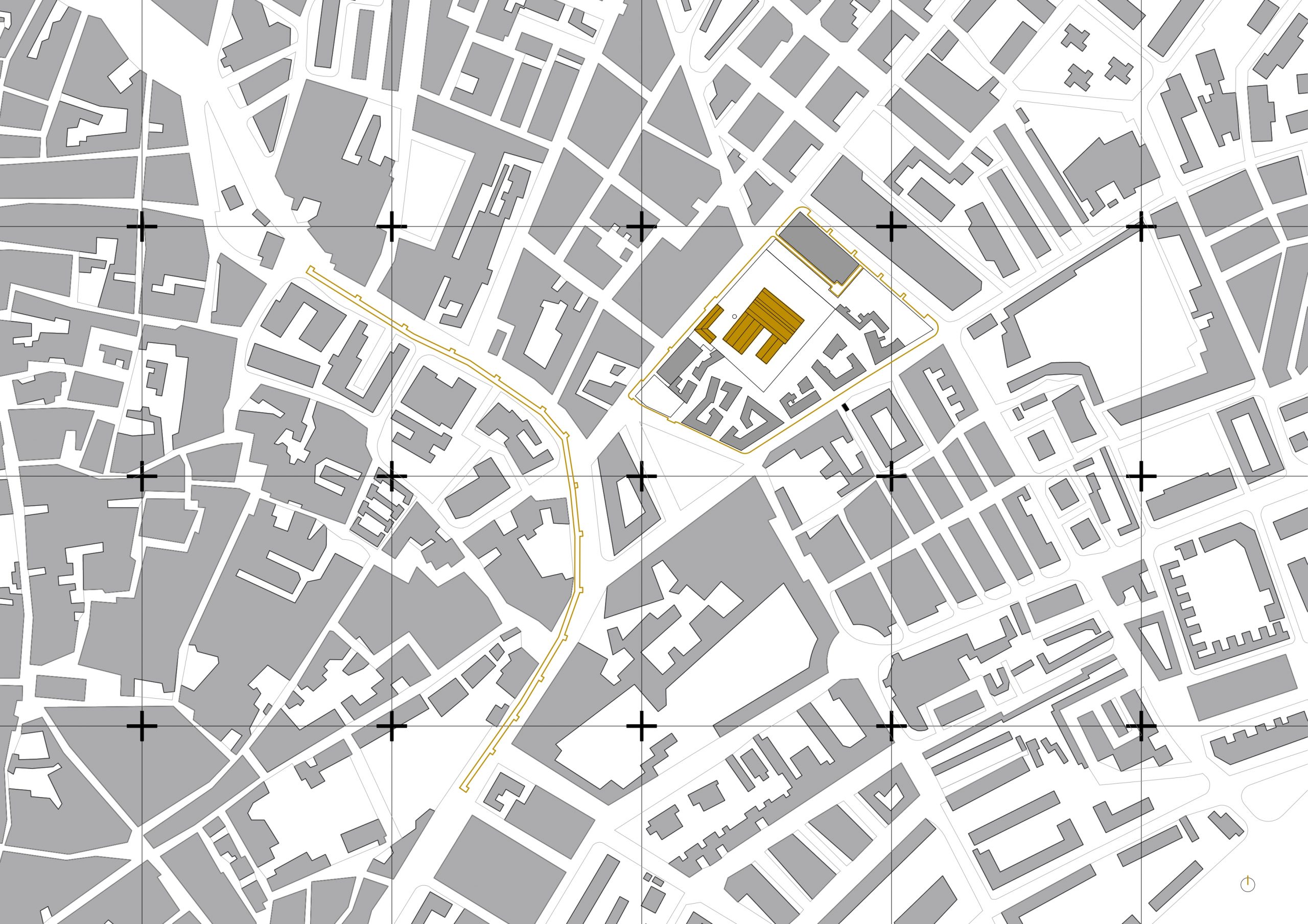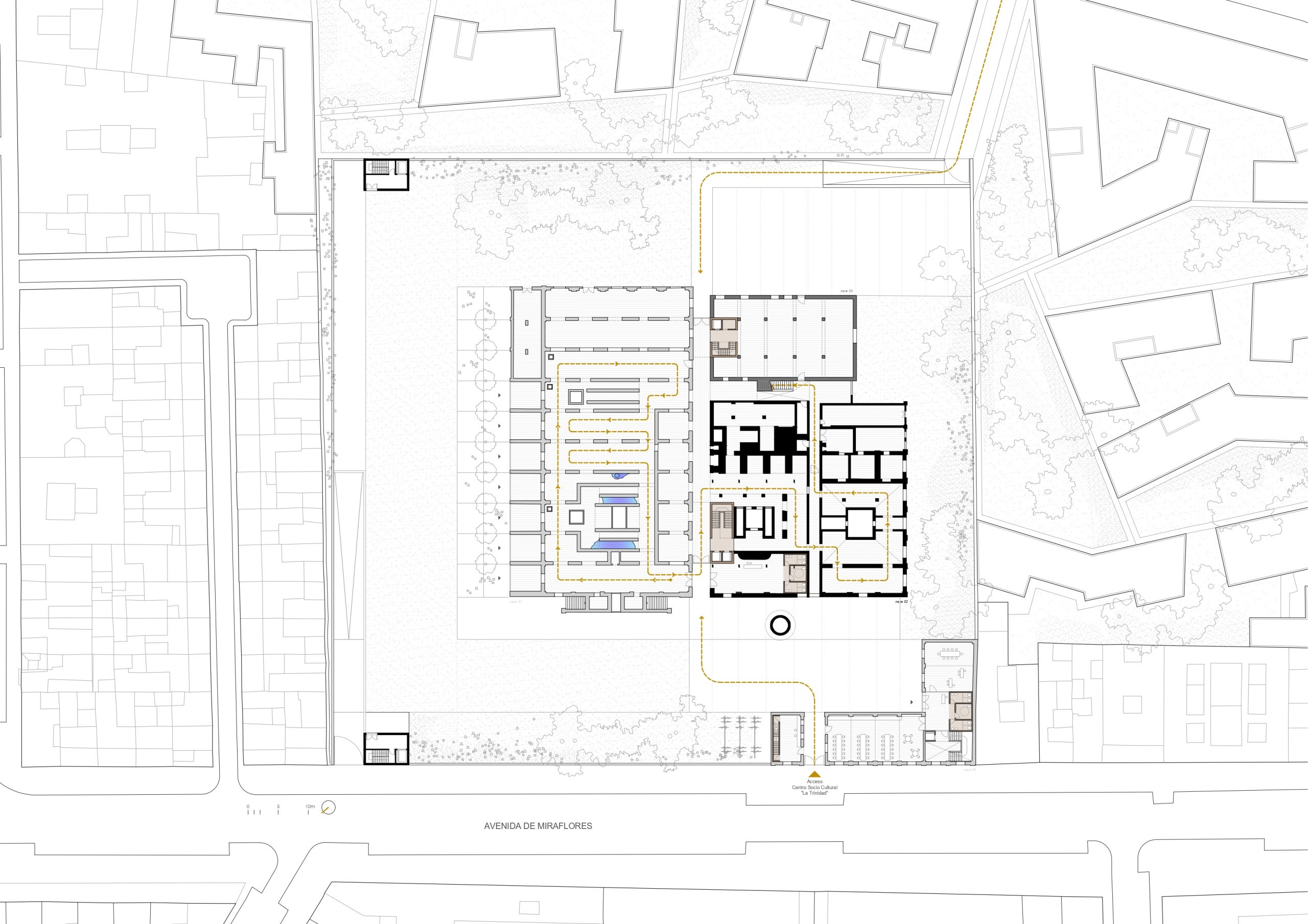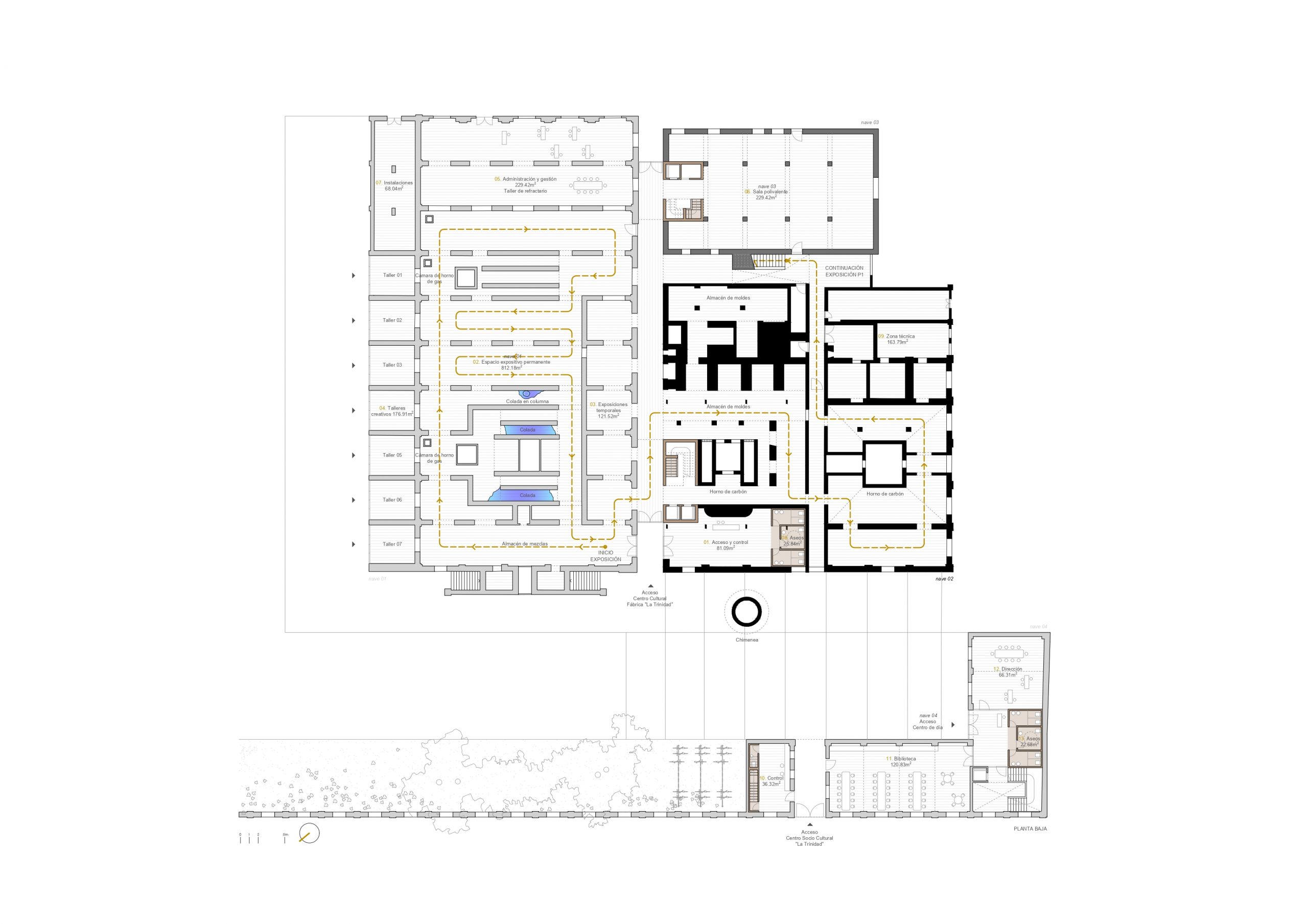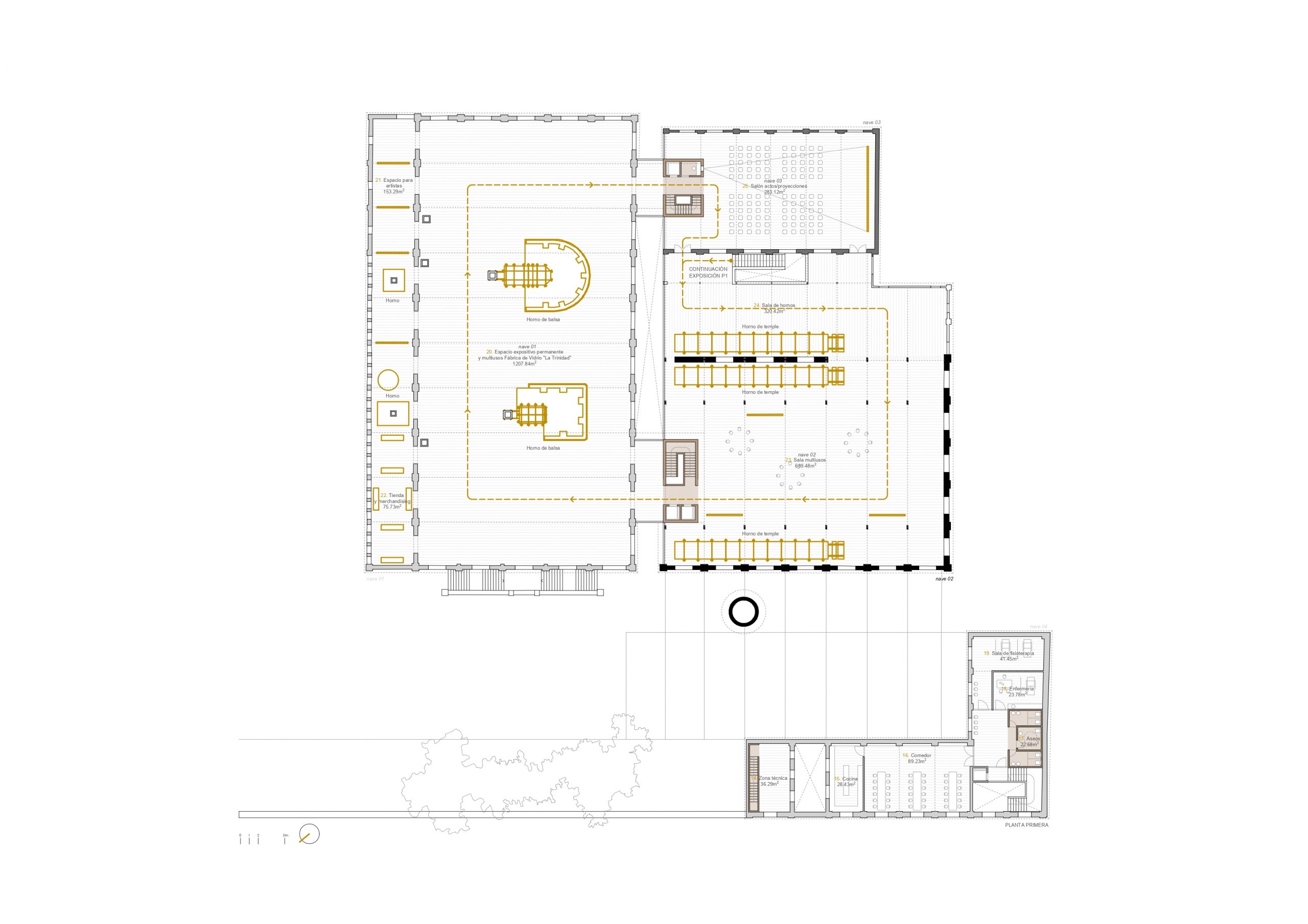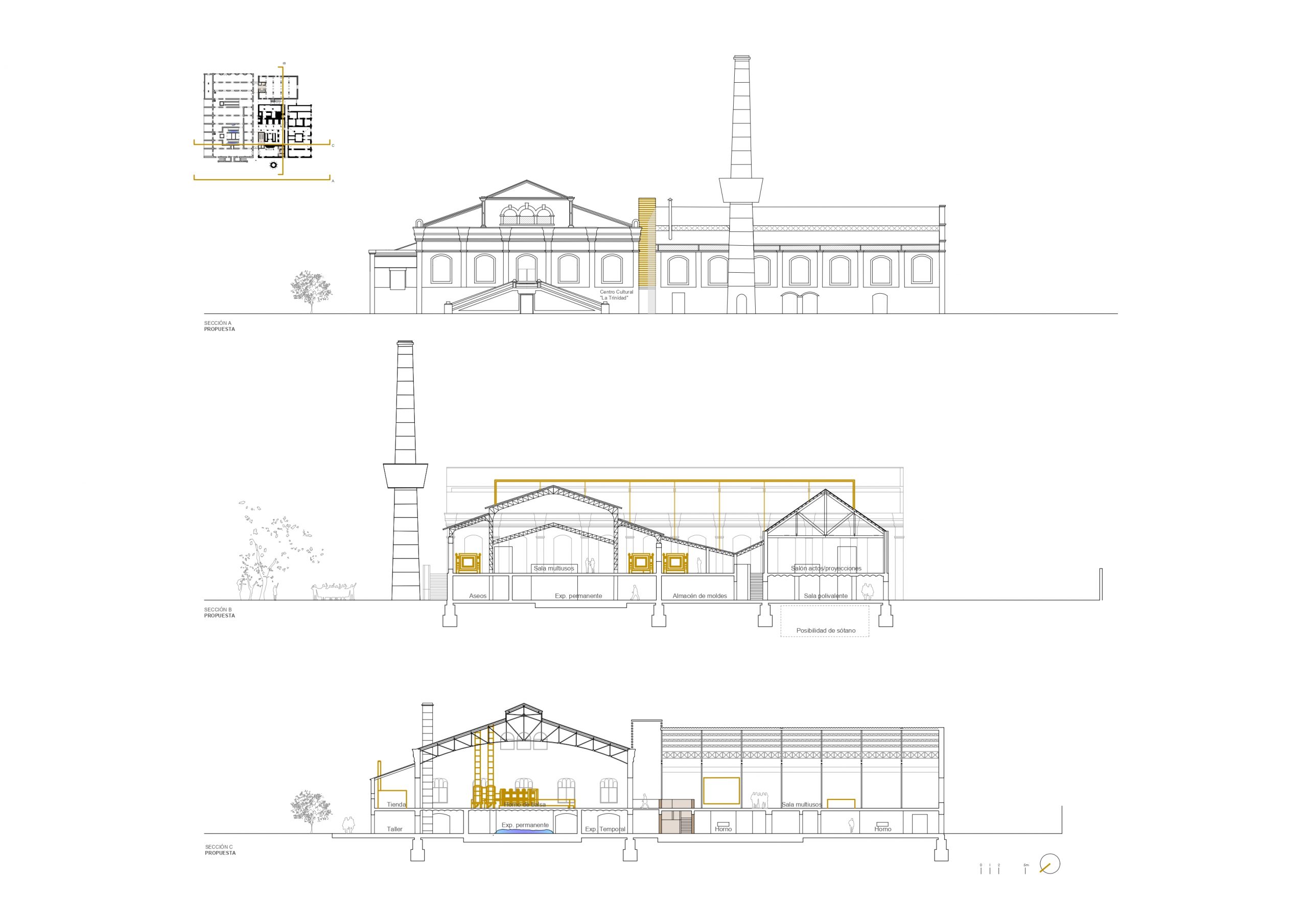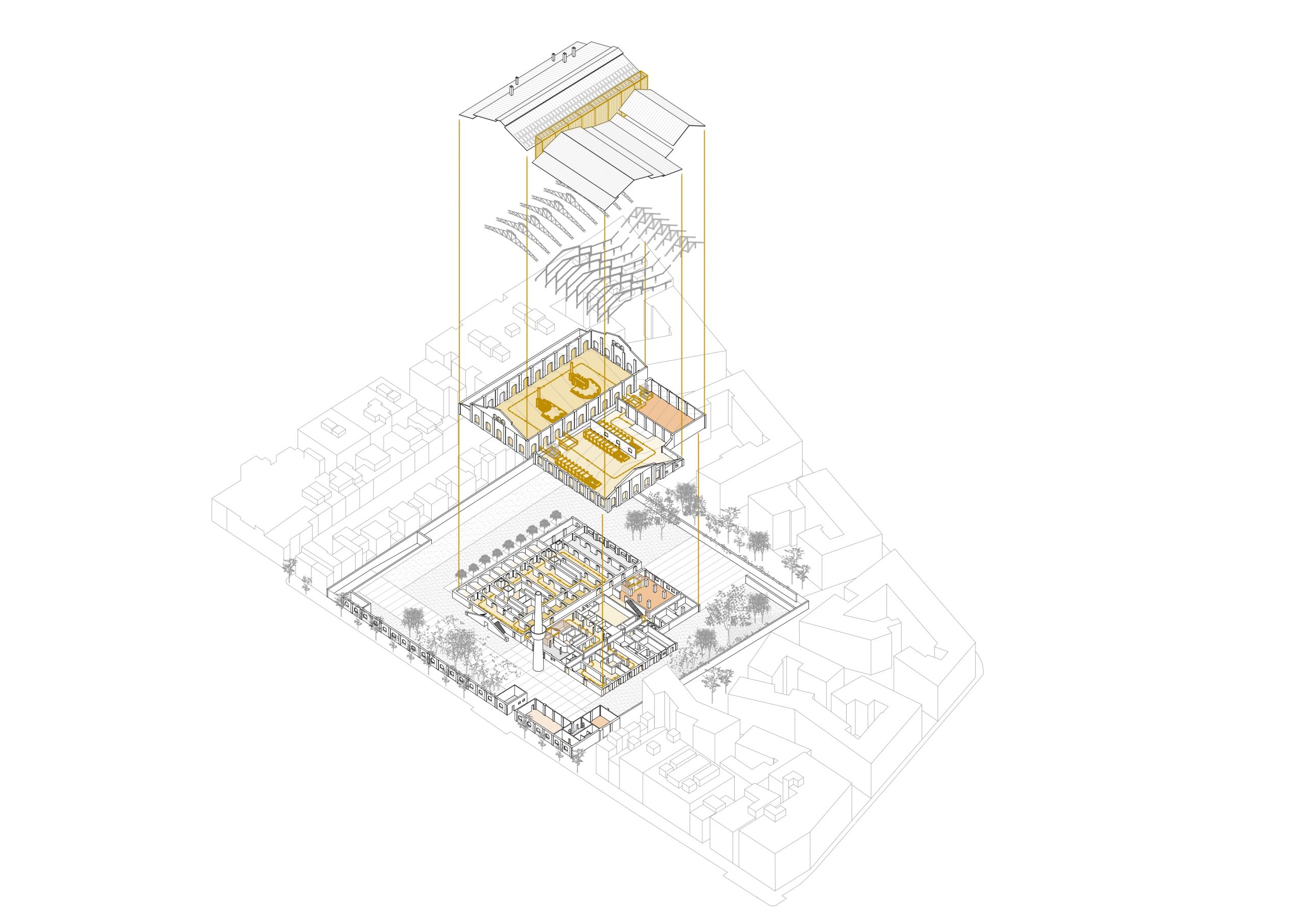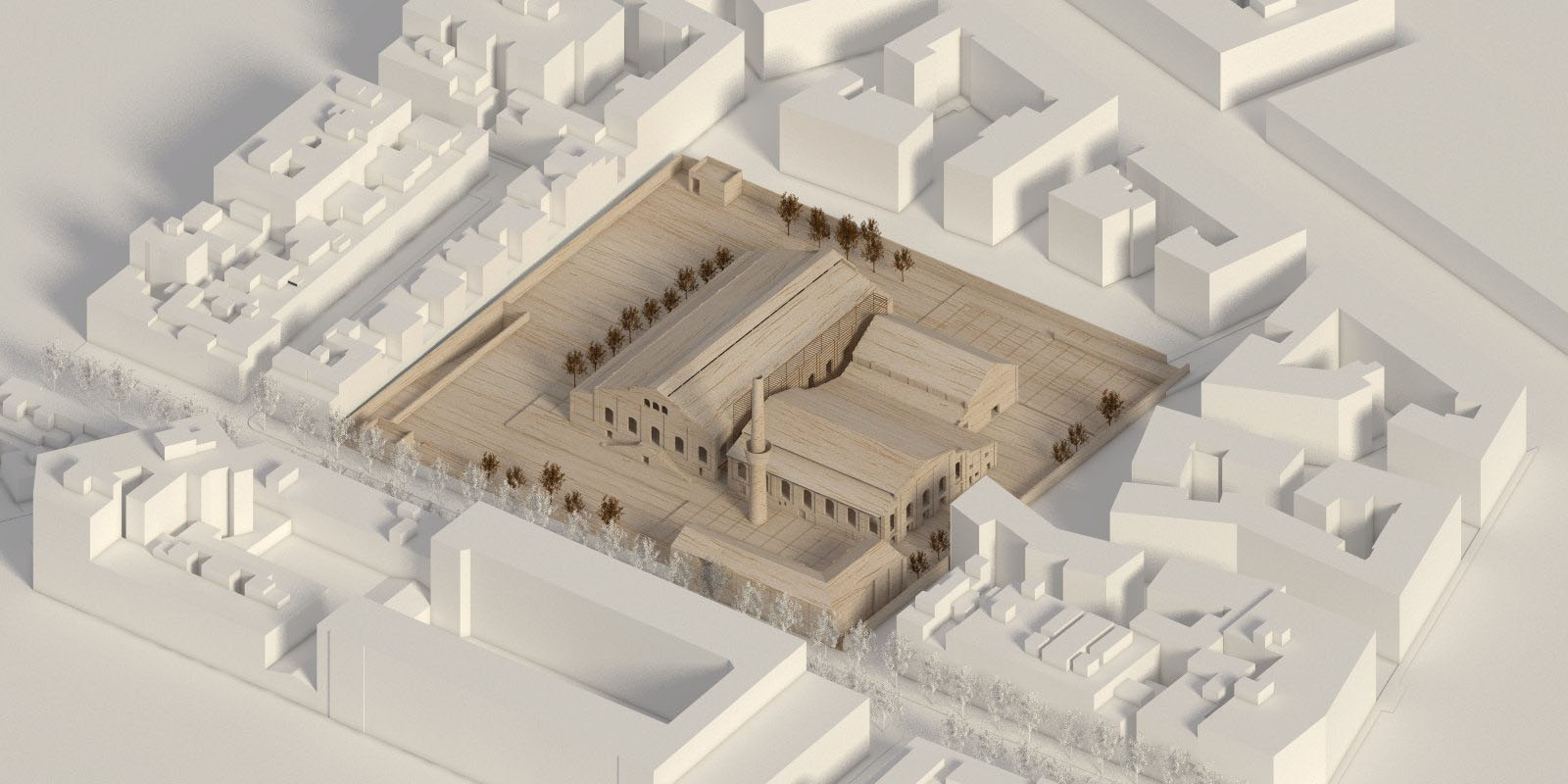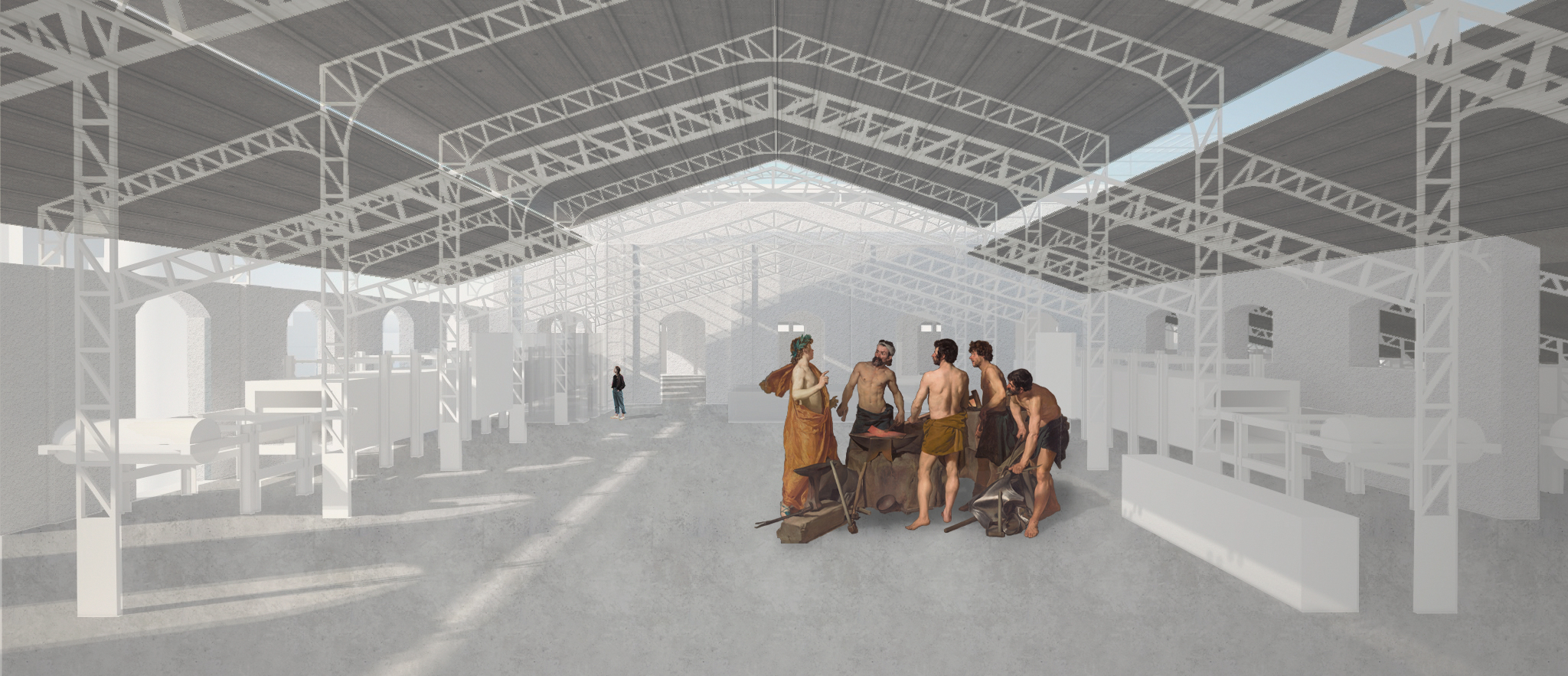Year of construction: –
Year of project: 2024
State: Competition
Location: Miraflores avenue
Promoter: Gerencia de urbanismo y medio ambiente de Sevilla
Architect: Pablo M. Millán Millán; Bm2 arquitectos
Contributors: Javier Serrano Terrones (Technical Architect); Francisco Duarte Jiménez (Engineering); Enrique Sánchez-Molina Verdú (Engineering); María Isabel Alba Dorado (Architect); Israel Sousa López (Museography); David Vera García (Architect); Celia Chacón Carretón (Architect); Cristian Castela González (Architect); Gabriele Giunchiglia (Architect)
Builder: –
When Hernán Ruiz (the elder) proposes the intervention in the Mosque-Cathedral of Córdoba, as Rafael Moneo highlights in his book The Life of Buildings, he manages to fit a project by borrowing all the conditions that identified the important structure of the Andalusian temple.
Without giving up anything, it manages to underline the isotropy of the floor plan, the original access, the module repetitive… in short, inserting a Renaissance temple manages to give the original dimension to the Hispano-Muslim Umayyad temple.
The mosque, like the important “temple” that makes up the Glass Factory complex, is part of an important structure, with a consolidated direction, with a marked rhythm and strategy of occupation in the territory, with a clear structure and with logical growth and additions due to the demand for space (as occurs in the Andalusian temple). All of this creates a plant synchronized with factory logic. The project that we plan to develop is based on a study that, like Hernán Ruiz, seeks specific, surgical interventions, in order to enhance the original elements and routes. Thus, just like the Renaissance intervention that reopens the Almohad doors, recovers directionality and organizes each area according to the use in which it is located, the project for the recovery of the glass factory plans to clean the dissonant elements, recover accesses and routes, distinguishing the character of each of the spaces and, from the complexity that the complex contains, in detail providing each area with the component that makes it unique. Picking up a phrase by Gabriel Ruiz Cabrero (current curator) about the Mosque-Cathedral of Córdoba, “we all know that the whole is made up of parts, many parts from very different periods, but this space has so much strength that the experience unifies each one of them.” them in a single feeling of wonder, of architecture.” Well, like Ruiz Cabrero, we intend with the intervention to sew the space while respecting its individuality, guaranteeing that rich unitary experience conferred by singular architectures such as that of the Glass Factory.
The proposal intervenes as minimally as necessary (once the pathologies of the complex have been resolved) to make it accessible and provide it with the versatility that the program requires. The heritage-protected elements remain practically unchanged and we apply the same process to the rest of the factory complex. We understand that space is understood not from the individualities of the ships, but from the complete heritage context.

